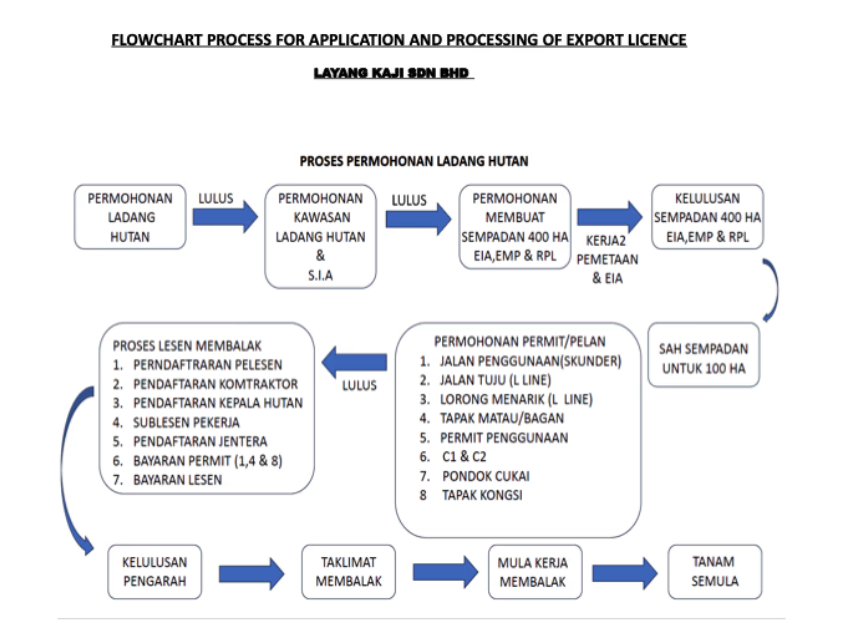Our approach ensures that while timber resources are harvested efficiently, the health of the forest ecosystem is maintained, and the rights of local communities and environmental standards are upheld.
Key Operational Areas
Logging Operations
We employ environmentally sound logging practices designed to minimize soil erosion and protect water bodies. Using advanced machinery and strict logging protocols, we ensure that only approved trees are harvested, with minimal impact on the surrounding flora and fauna.
Reforestation
After logging, our team begins reforestation efforts, planting indigenous species that are crucial to maintaining the biodiversity of the forest. Replanting efforts are conducted in areas like Compartment 33, ensuring that the forest can regenerate and continue to provide resources for future generations.
Forest Stewardship
Layang Kaji works in close collaboration with government agencies, local communities, and other stakeholders to ensure that forest lands are managed sustainably. Through community engagement and compliance with national and international forestry standards, we maintain the integrity and productivity of the forest ecosystems.
Sustainable Practices
Sustainability is at the heart of Layang Kaji's operations. We strive to balance timber production with environmental preservation and forest health, ensuring that the forest remains productive and vibrant for generations to come.
Key sustainable practices include:
Sustainable Logging
Our logging operations are planned meticulously using GIS and LiDAR technology, ensuring that only designated areas are harvested and that the ecological balance is preserved. This technology allows us to precisely monitor forest boundaries, plan road constructions, and avoid sensitive environmental areas.
Environmental Compliance
Layang Kaji conducts Environmental Impact Assessments (EIA) before any logging operation begins. This assessment helps us identify potential impacts on the soil, water, and wildlife, allowing us to implement mitigation strategies that reduce harm.
Forest Health Maintenance
We monitor the health of the forests regularly using advanced technology and on-the-ground assessments. Reforestation and restoration initiatives are a crucial part of our operations, ensuring that harvested areas are replanted with native species to maintain biodiversity. Additionally, through strict controls and environmental checks, we ensure that our activities do not lead to deforestation or long-term environmental degradation.
Application and Processing of Export Licence
At Layang Kaji, the application and processing of export licenses for forest operations follow a detailed and structured workflow to ensure compliance with local and international regulations. This process ensures that all legal requirements are met before any logging or timber exportation activities take place.

Key Steps in the Process:
Forest Plantation Application
This begins with an application for forest plantation, where the area for forest operations is defined and approved through a combination of Environmental Impact Assessments (EIA), EMP, and boundary setting.
Permit Application
Various permits are required for operational activities such as road building, logging camps, and tax checkpoints. Each permit is subject to approval from local authorities.
Logging License Application
Contractors, equipment, and logging supervisors must be registered and approved before logging activities can commence. Permits for logging equipment and machinery must be paid for and licenses are issued upon approval.
Boundary Setting & Mapping
The boundary for the forest operations must be clearly defined and mapped. This ensures compliance with environmental standards and helps avoid any encroachment into protected areas.
Director Approval & Briefing
Once all permits and licenses are obtained, the final step is the director's approval. Logging work begins with an official briefing and is followed by replanting initiatives to ensure sustainability.
